News
On Location in Blairstown: The Making of Friday the 13th
Toward the end of August 1979, the bulk of Friday the 13th’s cast and crew, those that weren’t already on location, arrived in Blairstown, New Jersey. They all anticipated the start of principal filming (some additional filming had taken place at the campsite, and around Blairstown, beginning on August 20, 1979, with a partial crew) which commenced on September 4, 1979, the day after Labor Day.

They were greeted by Sean Cunningham and Steve Miner who – along with Barry Abrams, Virginia Field, Tom Savini, and a few other members of the technical crew – had already set-up shop at the main Camp-No-Be-Bo-Sco filming location.
Cunningham and Miner had worked out a deal with the camp’s proprietors – involving a modest “rental fee” – that gave the Friday the 13th production free run of the place throughout the months of September and October. Effects expert Savini, along with his assistant and friend Taso Stavrakis, immediately designated one cabin as Savini’s makeup cabin to house Savini’s effects creations throughout filming, along with Savini’s invaluable barbershop chair. Most of Friday the 13th’s cast members, those whose characters were killed in the story, would end-up sitting for hours in this chair while Savini worked his effects magic.
Savini also commandeered the camp’s cafeteria location for his effects work, particularly the oven which he used to bake his creations. “Me and my small crew stayed at the campsite and we pretty much had the run of the place,” Savini recalls. “I set-up a Beta machine in one of my cabins and we’d watch movies when we weren’t working. The cast and crew stayed at nearby hotels and motels, but after awhile, a lot of them would hang-out at the cabins with us because we were having so much fun.”
Virginia Field set up shop in another cabin, along with her small design unit, for construction and drafting work. “From the day me and my team arrived on location for the start of filming, we started working in the cabin for twenty hours a day, throughout the filming,” Field recalls. “I didn’t get to watch much of the filming, or party with the rest of the crew, because me and my crew were always working. I spent most of the time drafting designs for materials that we still needed for the film. Chairs, knives, signs, tables, those kinds of things.”

The core of Friday the 13th’s technical crew – namely Barry Abrams and his crew of followers – had recently come-off of working on the film The Children, and they were tired. Some of them had returned to New York – to the village – and then made the 80 mile trip to Blairstown while others had travelled directly in from the Berkshires. Others, like Cecelia and John Verardi, a married couple who lived in Staten Island, walked away from their normal lives completely in order to blindly travel to Blairstown. They wanted to be part of the wacky, uncharted adventure that was the making of Friday the 13th.
Cecelia Verardi would perform many tasks on Friday the 13th – gofer, hairstylist, liaison between the cast members and the production, makeup effects assistant, makeup girl, production assistant – while husband John Verardi was a cameraman. “John, my husband, was working at Panavision in New York, and I was going to school to become a lawyer, and had been working at Estee Lauder, when John and I heard about Friday the 13th,” Cecelia Verardi recalls. “John was offered a management position at Panavision when Barry Abrams called up. We lived in Staten Island, which is about twenty miles from the village where Barry and his crew were based. John called me one day and asked me if I wanted to quit my job, quit school, and go to New Jersey and be a production assistant on this low budget movie. I didn’t know what a production assistant was and John told me that I’d basically be a gofer.”
While most of the crew came from New York, Cunningham and Miner also brought several crew members in from their Westport base of operations. They included Denise Pinckley, who ran Friday the 13th’s modest-looking production office at the campsite, and fourteen year old actor Ari Lehman who was cast as Jason Voorhees. Cunningham’s wife, Susan, also made the trip along with their son, Noel. A skilled film editor, Susan E. Cunningham established a makeshift editing bay at the campsite. She worked there throughout the filming, editing the film often simultaneous to the actual filming of scenes. Miner was originally supposed to edit Friday the 13th. But with Susan Cunningham handling the film’s editing, Miner was free to devote his energies entirely to his role as Friday the 13th’s producer, in tandem with Cunningham. Miner would don many hats throughout filming.
Susan Cunningham’s constant presence throughout filming was indicative of the family atmosphere that existed on Friday the 13th. Besides Noel and Susan Cunningham’s presence, Barry Abrams’ son, Jesse Abrams, was also in Blairstown. Wes Craven also appeared in Blairstown, along with his son, Jonathan.

The cast and crew of Friday the 13th arrived in Blairstown either by car or vans, but also often by bus, either through a commercial bus service or a chartered company bus that Cunningham secured for the production. Later on, during breaks in filming, Cunningham himself would often drive people – such as cast and crew members – to Blairstown from Connecticut or New York.
Cunningham’s ability to travel to and from Blairstown was a testament to the trust that he placed in Abrams and Miner, especially. There was also the specter of the casting of the Pamela Voorhees’ role, a dilemma that festered through the first two weeks of Friday the 13th’s filming schedule, and ultimately necessitated Cunningham to have to leave the Blairstown location in order to deal with this issue himself.
If the Friday the 13th production wore-out the 80 mile stretch of road from New York City to Blairstown, the arrival of Friday the 13th’s cast and crew in Blairstown represented a mini-occupation for the township of roughly 4000 people. After securing an agreement with Camp No-Be-Bo-Sco for use of the campsite prior to filming, Cunningham and Miner also met with the township’s leaders in order to foster cooperation and goodwill between the production and Blairstown. “Sean and Steve showed up in town before the start of filming and met with the town elders about the film,” recalls Richard Skow who was the Blairstown Fire Chief at the time of Friday the 13th’s filming and whose son appeared as one of the sleeping campers in the film’s opening pre-credit sequence. “Sean explained that he was making a horror film at the camp and asked if he could use some fire-trucks and police cars for certain scenes in the film. Sean was very friendly, very respectful, and we never had any problems with them during the filming.”
Cunningham and Miner were able to secure the use of a fire-truck and several police cars, luxuries they never could’ve afforded were it not for Cunningham’s charm and personal touch. The firetruck was especially useful for creating rain effects. In addition, Cunningham was granted the free use of Blairstown locations to film around. “Sean was smart enough to arrive in town before filming and schmooze the town elders so they would let him use the town’s resources for the film,” says art director Robert Topol. “He made friends with the townspeople, and with the cast and crew. Sean had that way about him. He’d shake your hand, and smile at you, and make you feel like you were an important person. He always knew your name, even if he was just introduced to you. He always knew everyone’s name.”
At the time of Friday the 13th’s filming, Camp No-Be-Bo-Sco was under the control of Fred Smith, a local bicycle shop owner who’d served as a Ranger since 1967. Smith, who died in 1985, was an old man at the time of Friday the 13th’s filming. He oversaw the land with the help of his young son, and was very protective of both the campsite and its reputation. He was wary at the prospect of a film being shot at the campsite. Cunningham’s charm and personable nature carried the day here in terms of winning over Smith – who was an entertained, happy spectator to much of Friday the 13th’s filming – to the idea of having Friday the 13th at the campsite. Smith, however, was never made fully aware of just what kind of film Cunningham and his cast and crew were making. “It was a very beautiful area, very scenic,” Harry Crosby recalls. “It felt like we were isolated from the rest of the world, which I think helped the movie.”

“What I remember most about the New Jersey location is the beautiful terrain,” Peter Brouwer recalls. “My girlfriend and I would always go hiking along the Appalachian Trail and we loved going into the woods. It wasn’t scary at all.”
“My fondest memory would probably be when we first started the film and it was still warm and sunny and all of us were together for the first time,” said Adrienne King. “Myself, Kevin Bacon, Harry Crosby, Mark Nelson, Jeannine Taylor and the others. We had a great time together; we were all in our twenties and were all so excited about working together. Even though it was such a low-budgeted film and we didn’t even know if it would even be completed or not! The sun was still shining and we really got to know each other well and it really felt like being away at summer camp.”
“We would drive up from Connecticut to the Delaware Water Gap in New Jersey, and one time I took the bus the whole way there,” recalls Ari Lehman. “The countryside is beautiful there, and the camp was situated deep in the woods. Once we arrived, there was convivial, communal working-artist energy. The cast and crew were from NYC, and they would listen to Patti Smith and the Ramones very loudly on their car stereos. It was 1979 and it was fun.”
“It was a beautiful location, very tucked away, and very rural,” Daniel Mahon recalls. “The camp was closed, obviously, when we arrived and we moved into the barracks while the union crew stayed at the motel. The camp had a very rustic feeling, with log cabins, and the plumbing was Geririgged prior to filming. Fred Smith was the manager of the summer camp and basically controlled the physical plant on which the camp was located. Fred was an expatriate and a real character. He kept talking about his neighbor, Lou, and eventually we discovered that the Lou he was talking about was Lou Reed, the famous musician who lived nearby!”
“The camp was cool,” soundman Richard Murphy recalls. “Lou Reed had a farm nearby and he would come by during the filming and he played music around us. We got to watch Lou Reed play for free, right in front of us, while we were making the film! He came by the set and we hung around with each other and he was just a really great guy. Friday the 13th was all about getting to hang-out in the woods with a bunch of close friends. We were close, close friends sharing our deepest secrets with each other.”
“I remember that I took a company bus to the filming location, and that Laurie Bartram and Harry Crosby were on the bus with me,” Mark Nelson recalls. “It was a nice trip, very scenic, and the three of us got to know each other a bit which I think helped us during filming in terms of developing some chemistry with each other.”
“Blairstown was a little rundown at that time,” recalls gaffer Tad Page. “There were small farms and people had guns! I loved the camp. The camp was very nice. There were deer running around. We were basically a bunch of city kids, New Yorkers, who were completely out of our element, and looking for action in this isolated place. We were always looking for action after work.”
“Blairstown was a very rural place, with lots of hills and valleys, as well as some nice weekend places where people from the city would go,” key grip Robert Shulman recalls. “It was a smooth 80 mile drive from Manhattan, the village, where all of us were from. By this point, we’d become this traveling crew, under Barry, so we were ready to go on a moment’s notice. We were young, and ready to have a great time making a movie at summer camp!”
The cast and crew of Friday the 13th represented wildly varying levels of competence and experience. This was especially visible in the crew which was comprised of both union and nonunion members. While the actors in Friday the 13th worked under SAG (Screen Actors’ Guild) conditions, the film itself was a non-union production.
The crew worked on a pay scale that ranged from between 100 to 750 dollars a week. Abrams and his travelling crew from New York did not divulge to their unions that they were doing Friday the 13th. “I never told my union I was doing Friday the 13th because I knew they would’ve punished me for doing a non-union movie like that,” recalled Abrams, who had joined the IATSE (International Alliance of Theatrical Stage Employees) camera union prior to Friday the 13th, whereas most of the rest of his crew were with the rival NABET (National Association of Broadcast Employees and Technicians) union that Abrams, ever the maverick, had recently left.
“None of us told the union we were doing Friday the 13th because we knew they would’ve fined us, especially me since I was in charge of the crew.”
The “privileges” that Abrams and his production crew enjoyed on Friday the 13th included not only higher paychecks – with Abrams and camera operator Braden Lutz, both of whom oversaw the technical crew, topping out in the $750 dollar a week range – but also with slightly better living conditions.
While most of the junior and non-union crew members joined Savini at the campsite’s cabins, Abrams and his group of colleagues and friends stayed at a two-story truck-stop motel in nearby Columbia, New Jersey, about a twenty minute drive from the campsite. At first sight, the motel – called 76 Truck Stop – wasn’t much of an attraction, especially since the motel, in keeping with its truckstop designation, was adjacent to a vast stretch of highway road that was home to an endless stream of big, noisy trucks that rambled up and down the road, back and forth, day and night.
A vestige of the CB radio craze that swept across America in the mid to late 1970s, catapulted by the blockbuster success of the film Smokey and the Bandit (1977), the motel (which exists today as a Travel Centers of America location, complete with various amenities) was crawling with CB radios but offered no television for the crew to enjoy. The only luxury the motel featured was a twenty-four hour luncheonette.
Blairstown itself was, as mentioned, a depressed community and scarcely offered the cast and crew of Friday the 13th any exciting choices during off-hours. Against this bland backdrop, Abrams and his crew turned the motel into their own fall version of a spring break party motel, complete with the requisite alcohol, drugs and sex. The sex was in much lower quantities (the males far outnumbering the females on the crew) than the alcohol and drugs the crew would absorb throughout Friday the 13th’s filming. The atmosphere at the motel was rowdy and wild.
While Abrams and his crew worked effectively and extremely hard throughout filming, their partying equaled this. Not even an independent production like Friday the 13th – in an isolated place like Blairstown – was immune from the alcohol and drug-fueled atmosphere that was pervasive on seemingly all film and television productions throughout the late 1970s and early 1980s. Blairstown’s remote location, and a complete lack of supervision, made for an especially toxic atmosphere throughout filming.
The crew of Friday the 13th liked to work hard and party hard; they could take it. As much as the motel shenanigans embodied the filmmaking culture in 1979, it was also emblematic of the close friendship that existed amongst Abrams and his crew of friends.
They were young (Abrams was one of the elders on the Friday the 13th crew at 35 years old), wild, and full of energy. They were happy to be alive and making a movie, especially together. “We had parties at the motel throughout the filming,” Abrams recalled. “We’d drink beer every night, and we just took the place over. It got pretty wild, but we were working hard, and we were all friends. In those days, we were working out our lighting diagrams for the next day’s filming on napkins at the truck-stop where the camera crew ate breakfast after the long nights, although we had done a master plan for the main locations in pre-production.”
“The motel was right off the highway and if you walked outside you had to be careful because you could get hit by the trucks that were always flying by,” James Bekiaris recalls. “We mostly used the motel to get our meals, drink, party. To get any action around there, we had to go to nearby Strasburg, Pennsylvania.”
“The Martin Sheen drinking scene in Apocalypse Now would be a good description of what it was like at the motel during filming,” Richard Murphy recalls. “It was a gorgeous area that we were in, but it was a very noisy truck-stop motel with all of the traffic moving around us. We would be partying at six in the morning sometimes. We were a bunch of hard-drinking guys. I recall that Betsy Palmer stayed there when she arrived later on during filming, and that some of the other actors stayed there. Barry and I thought about leaving and moving into the cabins after a couple of weeks, but we all stayed. A lot of the fun we had was a result of the fact that we were all close, close friends. Sean had a young kid and a wife and didn’t stay at the motel, and neither did Steve. The actors partied with us, except for Walt Gorney who was at least thirty years older than the rest of us. We didn’t really want to hang-out with him.”
“We were young and crazy and had wild parties at the motel,” Tad Page recalls. “I don’t recall the actors ever joining us at the motel for the parties. Most of us stayed at the truck-stop motel right off of Route 80, so that was not as rustic as the rest of Blairstown, but Braden [camera operator Braden Lutz] moved into one of the cabins by the lake at Camp No-Be-Bo-Sco.”
“The truck-stop motel was wild,” David Platt recalls. “We sat around and drank rum and orange juice and had parties. We’d have beer and eggs in the morning and at night, depending on if we’d been filming at day or night. Usually, it didn’t matter. A lot of times we’d wake-up at eleven or twelve in the afternoon, party and then sleep for three or four hours and then go to work. My big thing was trying to learn to operate the Boom mike, without looking incompetent, because I really didn’t know the fucking job and I was very much learning on the job.”
“Every night we’d all gather in the same room and party,” Robert Shulman recalls. “It was about thirty minutes from the motel to the camp location. The truck-stop motel had a twenty-four luncheonette which was great, but the downside was that there were all of these CB radios at the motel which meant there was no TV. Braden Lutz, who battled alcoholism and substance abuse, decided to stay in a cabin on the other side of the lake. He wasn’t the only one who was battling that stuff. Barry was doing a lot of stuff, and so were most of us. Everyone did drugs.”
“John [cameraman John Verardi] went ahead to Blairstown and forgot to leave a note at the motel about me so when I arrived at the motel, the manager wouldn’t let me in,” Cecelia Verardi recalls. “I had to sit there from two in the afternoon until eleven at night before I got into the room. I believe that Laurie [Laurie Bartram] stayed at a hotel and some of the others stayed at the cabins. Actually, I recall that Jeannine [Jeannine Taylor] and Laurie stayed at the cabins initially and then moved to a hotel. I recall that Adrienne [Adrienne King] stayed at a hotel in Connecticut. The unit all stayed together, except for Sean and his family who stayed at Adrienne’s hotel. It was a tight circle of friends at the motel. The rest of the production assistants on the film, the production assistant unit, stayed together at the camp where you’d often see them all laid-out on the floor in the cabins.”
Cunningham – especially with his family in tow – wanted nothing to do with the shenanigans that existed amongst the crew at the motel. In fact, both Cunningham and Miner recall staying at the campsite, with Savini and the other minions, although Cunningham and Miner also commuted to nearby Connecticut during filming. “We were shooting at a Boy Scout camp,” Cunningham recalled. “We had no money and we were sleeping, literally, in cabins; cabins with no heat and outdoor plumbing, and it got cold at night.”
The preceding excerpt was taken from the book On Location in Blairstown: The Making of Friday the 13th, which is available in kindle and print.
Listen to the 'Eye On Horror Podcast'

Movies
Another Creepy Spider Movie Hits Shudder This Month
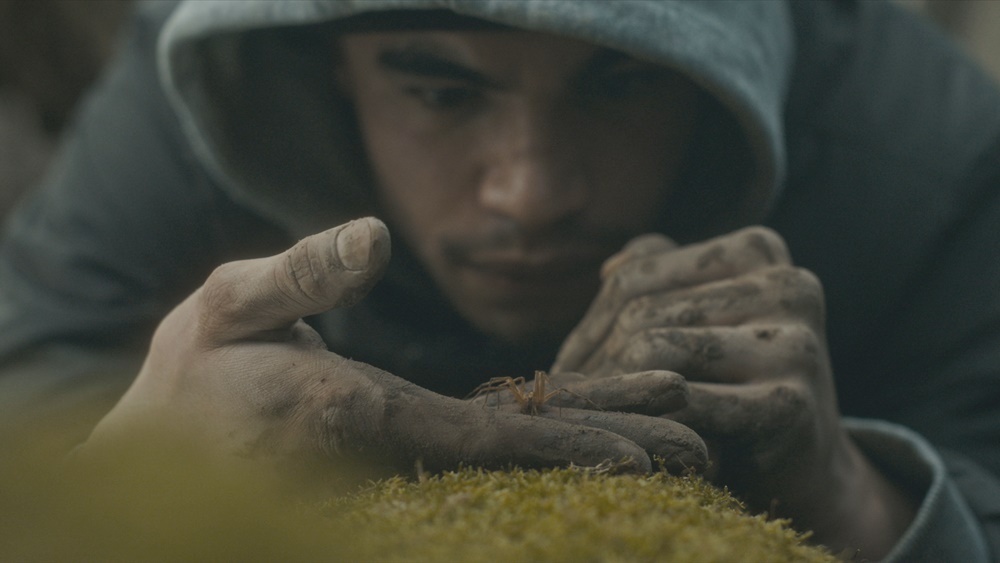
Good spider films are a theme this year. First, we had Sting and then there was Infested. The former is still in theaters and the latter is coming to Shudder starting April 26.
Infested has been getting some good reviews. People are saying that it’s not only a great creature feature but also a social commentary on racism in France.
According to IMDb: Writer/director Sébastien Vanicek was looking for ideas around the discrimination faced by black and Arab-looking people in France, and that led him to spiders, which are rarely welcome in homes; whenever they’re spotted, they’re swatted. As everyone in the story (people and spiders) is treated like vermin by society, the title came to him naturally.
Shudder has become the gold standard for streaming horror content. Since 2016, the service has been offering fans an expansive library of genre movies. in 2017, they began to stream exclusive content.
Since then Shudder has become a powerhouse in the film festival circuit, buying distribution rights to movies, or just producing some of their own. Just like Netflix, they give a film a short theatrical run before adding it to their library exclusively for subscribers.
Late Night With the Devil is a great example. It was released theatrically on March 22 and will begin streaming on the platform starting April 19.
While not getting the same buzz as Late Night, Infested is a festival favorite and many have said if you suffer from arachnophobia, you might want to take heed before watching it.
According to the synopsis, our main character, Kalib is turning 30 and dealing with some family issues. “He’s fighting with his sister over an inheritance and has cut ties with his best friend. Fascinated by exotic animals, he finds a venomous spider in a shop and brings it back to his apartment. It only takes a moment for the spider to escape and reproduce, turning the whole building into a dreadful web trap. The only option for Kaleb and his friends is to find a way out and survive.”
The film will be available to watch on Shudder starting April 26.
Listen to the 'Eye On Horror Podcast'
Movies
Part Concert, Part Horror Movie M. Night Shyamalan’s ‘Trap’ Trailer Released
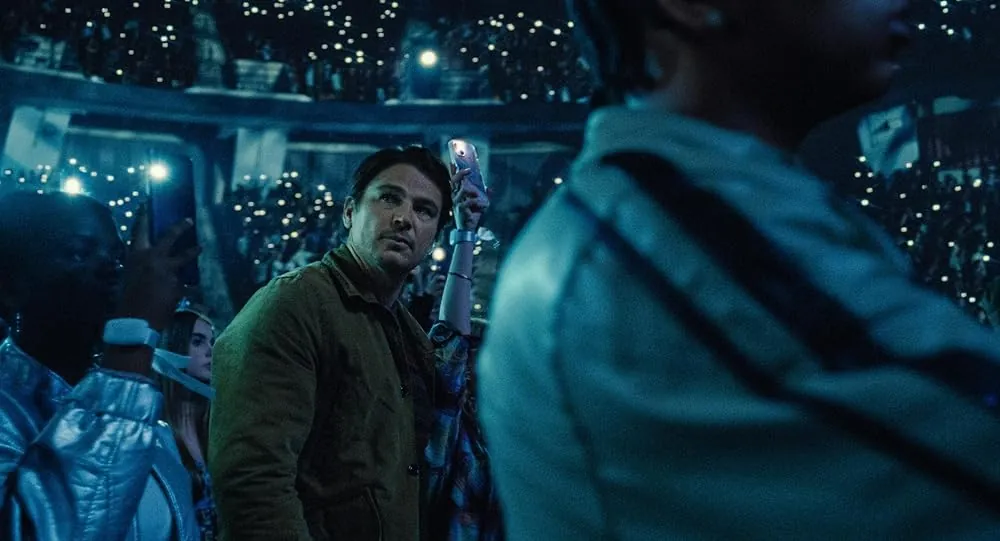
In true Shyamalan form, he sets his film Trap inside a social situation where we aren’t sure what is going on. Hopefully, there is a twist at the end. Furthermore, we hope it’s better than the one in his divisive 2021 movie Old.
The trailer seemingly gives away a lot, but, as in the past, you can’t rely on his trailers because they are often red herrings and you are being gaslit to think a certain way. For instance, his movie Knock at the Cabin was completely different than what the trailer implied and if you hadn’t read the book on which the film is based it was still like going in blind.
The plot for Trap is being dubbed an “experience” and we aren’t quite sure what that means. If we were to guess based on the trailer, it’s a concert movie wrapped around a horror mystery. There are original songs performed by Saleka, who plays Lady Raven, a kind of Taylor Swift/Lady Gaga hybrid. They have even set up a Lady Raven website to further the illusion.
Here is the fresh trailer:
According to the synopsis, a father takes his daughter to one of Lady Raven’s jam-packed concerts, “where they realize they’re at the center of a dark and sinister event.”
Written and directed by M. Night Shyamalan, Trap stars Josh Hartnett, Ariel Donoghue, Saleka Shyamalan, Hayley Mills and Allison Pill. The film is produced by Ashwin Rajan, Marc Bienstock and M. Night Shyamalan. The executive producer is Steven Schneider.
Listen to the 'Eye On Horror Podcast'
News
Woman Brings Corpse Into Bank To Sign Loan Papers

Warning: This is a disturbing story.
You have to be pretty desperate for money to do what this Brazilian woman did at the bank to get a loan. She wheeled in a fresh corpse to endorse the contract and she seemingly thought the bank employees wouldn’t notice. They did.
This weird and disturbing story comes via ScreenGeek an entertainment digital publication. They write that a woman identified as Erika de Souza Vieira Nunes pushed a man she identified as her uncle into the bank pleading with him to sign loan papers for $3,400.
If you’re squeamish or easily triggered, be aware that the video captured of the situation is disturbing.
Latin America’s largest commercial network, TV Globo, reported on the crime, and according to ScreenGeek this is what Nunes says in Portuguese during the attempted transaction.
“Uncle, are you paying attention? You must sign [the loan contract]. If you don’t sign, there’s no way, as I cannot sign on your behalf!”
She then adds: “Sign so you can spare me further headaches; I can’t bear it any longer.”
At first we thought this might be a hoax, but according to Brazilian police, the uncle, 68-year-old Paulo Roberto Braga had passed away earlier that day.
“She attempted to feign his signature for the loan. He entered the bank already deceased,” Police Chief Fábio Luiz said in an interview with TV Globo. “Our priority is to continue investigating to identify other family members and gather more information regarding this loan.”
If convicted Nunes could be facing jail time on charges of fraud, embezzlement, and desecration of a corpse.
Listen to the 'Eye On Horror Podcast'
-
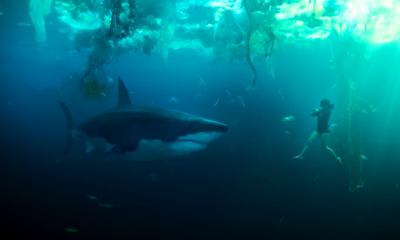
 Trailers7 days ago
Trailers7 days agoWatch the trailer for ‘Under Paris,’ the movie people are calling ‘French Jaws’ [Trailer]
-
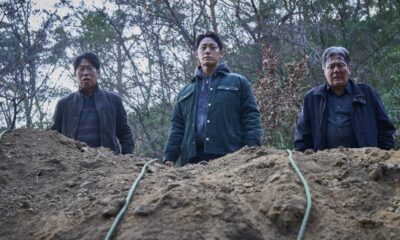
 News3 days ago
News3 days agoThis Horror Film Just Derailed a Record Held by ‘Train to Busan’
-
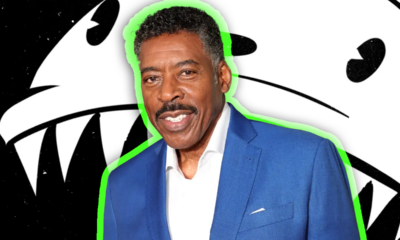
 Movies7 days ago
Movies7 days agoErnie Hudson To Star In ‘Oswald: Down The Rabbit Hole’
-
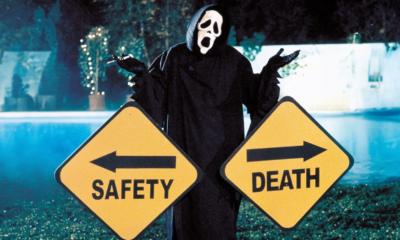
 News7 days ago
News7 days agoParamount and Miramax Team Up to Reboot the “Scary Movie” Franchise
-
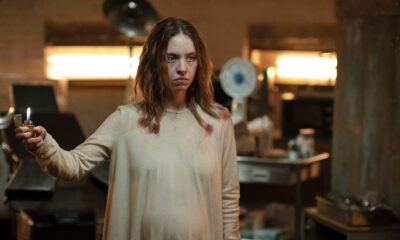
 Movies3 days ago
Movies3 days agoWatch ‘Immaculate’ At Home Right Now
-

 News4 days ago
News4 days agoRead Reviews For ‘Abigail’ The Latest From Radio Silence
-
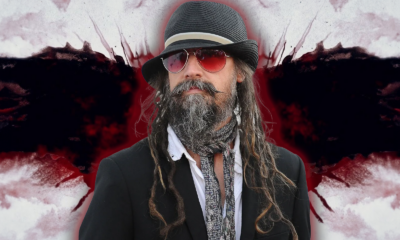
 Editorial4 days ago
Editorial4 days agoRob Zombie’s Directorial Debut Was Almost ‘The Crow 3’
-

 News3 days ago
News3 days agoMelissa Barrera Says Her ‘Scream’ Contract Never Included a Third Movie

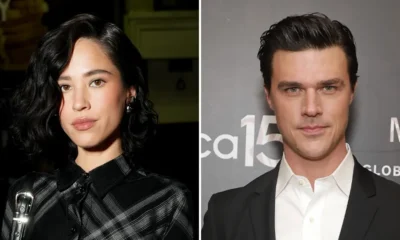




















You must be logged in to post a comment Login